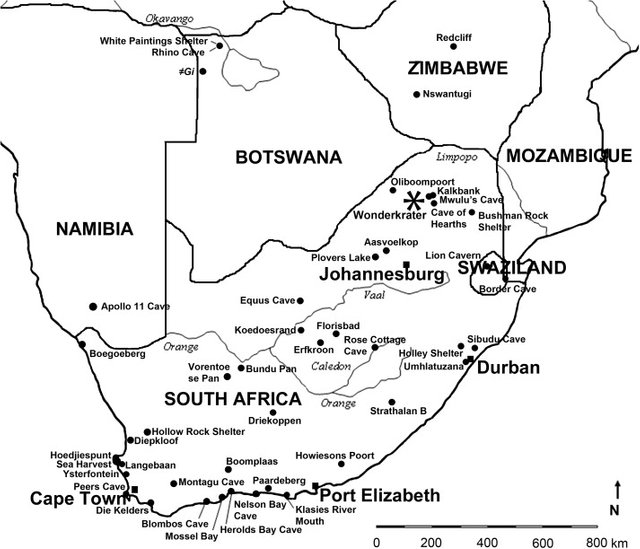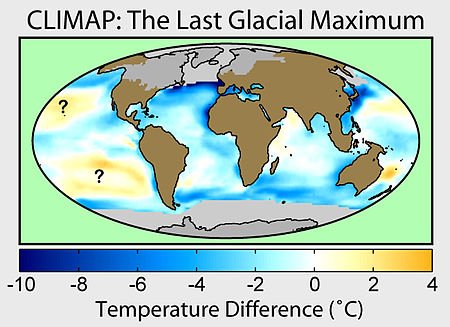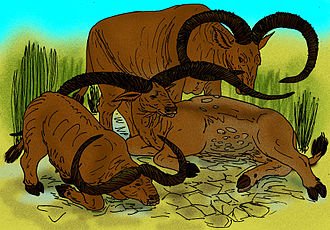The Later Stone Age of South Africa : Climatic conditions of the LSA in South Africa

Dear Reader
In this following series of posts we are covering the Later Stone Age of South Africa, I highly encourage you to please read the Introduction, Historical Background and Advances in Later Stone Age posts to this series to bring you update to date with the information and terminology we have covered so far.
Climatic conditions of the LSA in South Africa
The context/paradigm of archaeological research has shifted to incorporate the role of the environment into archaeological studies (Parkington 1984). Lithic studies in South Africa are now supplemented by the reconstruction of palaeoenvironments, which take into account in which ecological changes (as indicated by plant and animal remains). Analyses of isotopes from deep-sea cores, pollen, charcoal, micro-and macro mammals, stalagmites in cave formations and sediments are used as indicators to reconstruct climate. Archaeological deposits and fossils provide evidence of the climate changes that have occurred in the past (ie over thousands of years).
For the purpose of this post, we shall give only a broad framework of the short-term climatic fluctuations that occurred during the LSA:
- The Last Interglacial (130 000-118 000 years ago, the Last Glacial cycle (ca 118 000 to 14 000 years ago) and the Present Interglacial (12 000 years to present, or the Holocene)are used as global terms. South Africa was not glaciated during the last 130 000 years of the Pleistocene and succeeding Holocene, but significant climatic changes were observed in South Africa during these time periods. The last time that climates in the oceans or on land were as warm as the present was at 120 000 years and probably 6000 years ago.
- The Last Interglacial is an important period in the development and emergence of anatomically modern humans and is associated with main MSA occupations. Cold conditions were experienced globally during this period.
- Interstadials of short, milder episodes of more favourable climate occurred within the Last Glacial (ie at 103 000 years, 84 000 years, 60 000 years and 32 000 years ago).
- A significant number of the cave sequences show clear break between LSA occupation and the underlying MSA occupation levels. The LSA dates are, in many instances, younger than 22 000 years ago, whereas the dates for MSA levels range from 60 000 years to the beginning of the Last Interglacial (at 130 000 years ago). This clearly indicates a hiatus in site occupation. Populations appear to have been small and fragmented, and confined to suitable environments.
- There is not enough information available on tempretures before about 22 000 Before Present (BP) although we know that very cold conditions prevailed in some inland areas.The Last Glacial Maximum seems to have had the coolest conditions around 18 000 BP. Cave temperatures were approximately 5-7 degrees lower than present and inland temperatures were lower by about 5 degrees.
- During the Last Glacial Maximum the ocean around South Africa was several degrees cooler than present. The LSA appears to have completely replaced the MSA before the beginning of the most severe climatic conditions of the Last Glacial Maximum.
- When the ice sheets expanded around 18 000 BP, there was a global lowering of sea levels which exposed the continental shelf and placed the Southern Cape mountains about 100 km inland. Coastal sites such as Nelson Bay Cave became inland sites with a coastal plain wider than 100 km along the south coast. The coastal cliffs would have been very steep and few cave sites which are at present situated near the coast, would have then been close enough to the sea to enable the exploitation of marine resources. Some sites are now submerged beneath the sea. Where the continential shelf is narrower, that is, along the Transkei and Kwa-Zulu Natal coast, the effect of lowering sea levels was not significant.
The lower rainfall along the coast and inland areas led to much drier conditions generally. Pollen analyses also indicate cooler and drier conditions inland. Studies of the microfauna at Border Cave confirm evidence indicating a cool to cold and drier climate. There is, however, no simple correlation between temperature and rainfall in South Africa and, at present, mammal sizes and small mammal diversity are also used to infer past environments and climates in this sub-continent.
Grassland and open plains were part of the landscape during this time. This is confirmed by the faunal evidence consisting of ostrich, wildebeest, springbok, quagga and other plain animals in areas where fynbos (shrub vegetation of the south-western and western Cape)now predominates. The combined pressure of climatic and environmental changes and possibly improved hunting practices resulted in the extinction of some species at the end of the Pleistocene or the beginning of the Holocene. Extinct species include the giant buffalo (Pelorovis antiquus), giant Cape horse (Equus capensis), giant harteneest (Megalotragus pricus) and giant wart-hog (Metridiochoerus sp.), as well as two species of springbok (Antidorcas bondi and australis). These species are not present in deposits younger than approximately 10 000 years.
When climatic and technological sequences are compared there is no clear correlation between the scale and timing of changes in the two sets of data. Despite considerable variations in temperature and rainfall between 30 000 to 25 000 BP, the early Later Stone Age grades into Robberg only after 22 000 BP and the Robberg is replaced by Oakhurst industries only after 12 000 BP.
- After 16 000 BP, tempretures started to rise steadily with a substantial increase in precipatation during this period. A subsequent rapid warming is estimated to have begun between 14 000 to 12 000 BP.
- During the Last and Present Interglacial it seems that populations were more widespread, with an increase after 15 000 BP. This suggests a direct relationship between climatic change and the increased human population densities, as expressed in the archaeological visiblity of sites.
- The environmental changes that took place did not affect the basic flaking methods or the range of formal tools. There is a marked increase in frequency of decorative items and polished bone tools after 14 000 BP, particularly between 12 000 and 10 000 BP. This contrasts with their rare appearence before this time.
- The early Holocene seems to have been relatively warm and dry. 6000 years ago temperatures were 1-2 degrees warmer than present with sea levels along the coast higher by 1 meter.
- There is a significant increase of sites utilised in the last 5000 years, concomitant with an increase in populations.
- Somewhat cooler and more moist conditions occurred within the last 3000 to 2000 years, varying to some extent from one region to the another, but with higher precipitation in the summer rainfall area.
Images are link to their sources in their description and references are stated within the text.
Thank you for reading
Thank you @foundation for this amazing SteemSTEM gif






Upvoted & RESTEEMED!
Thank you @opc:)
Nice post, we liked!!
I upvoted and comment for you. Please upvote and comment for helping me grow @mdfoysal
Following this series!
The origin of human trace on africa. Correct me if i am wrong.
The climate of South Africa is determined by South Africa's situation between 22°S and 35°S, in the Southern Hemisphere's subtropical zone, and its location between two oceans, Atlantic and Indian. It has a wider variety of climates than most other countries in sub-Saharan Africa, and it has lower average temperatures than other countries within this range of latitude, like Australia, because much of the interior (central plateau or Highveld, including Johannesburg) of South Africa is at higher elevation. Winter temperatures may reach the freezing point at high altitude, but are at their most mild in coastal regions, particularly the Eastern Cape. Cold and warm coastal currents running north-west and north-east respectively account for the difference in climated between west and east coasts. The weather is also influenced by ENSO (El Hito–Southern Oscillation).
South Africa experiences a high degree of sunshine with rainfall about half of the global average, increasing from west to east, and with semi-desert regions in the north-west. While the Western Cape has a Mediterranean climate with winter rainfall, most of the country experiences summer align
Good to know such an information, looking forward...
Congratulations @zest! You have completed some achievement on Steemit and have been rewarded with new badge(s) :
Click on any badge to view your own Board of Honor on SteemitBoard.
For more information about SteemitBoard, click here
If you no longer want to receive notifications, reply to this comment with the word
STOPVery Interesting. I have just one questions though: In what ways were the climates of Johannesburg and Cape Town the same or different at that ancient time?. I am under the understanding that Cape Town has a Mediterranean type climate with ample Winter rain and Johannesburg has a Highland Tropical climate with rain and thunderstorms in the Summer but dry chilly Winters
Another interesting post & good read. Thanks